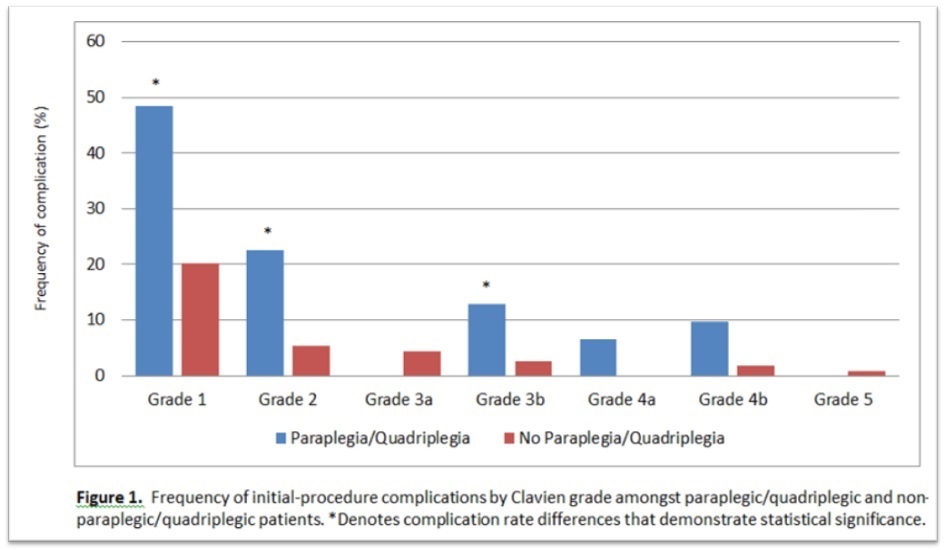|
Back to Annual Meeting Program
A Comparative Study of Outcomes in Paraplegic/Quadriplegic Patients with Stone Disease Undergoing PCNL Using the Modified Clavien System
Zeeshan A. Danawala, MD, Jaimin G. Shah, MD, Dinesh Singh, MD.
Yale University, New Haven, CT, USA.
BACKGROUND:Types and rates of post-operative complications in paraplegic/quadriplegic patients (PQP) undergoing percutaneous nephrolithotomy (PCNL) have not been well delineated in the literature. The purpose of this study was to investigate the perioperative complication rates for paraplegic/quadriplegic patients (PQP)
undergoing PCNL as compared to non-PQP using a standardized method of complication reporting via the Clavien system.
METHODS:
In this retrospective study between December 2004 and February 2011, 213 consecutive PCNLs performed at Yale New Haven Hospital by a single surgeon were analyzed. There were 31 and 115 patients
separated into PQP and non-PQP groups, respectively. Data collection included patient demographic and clinical factors, as well as perioperative and delayed complications. Complications were organized by Clavien grade. All-procedure and initial-procedure complications were analyzed. For purposes of comparison, it was assumed that a distinct complication for a given grade was independent of all other complications. The rate of adverse events for each Clavien grade was calculated. Statistical comparisons were made via chi square or Fisher’s exact tests. RESULTS: There were a total of 38 (in 31 procedures) and 43 (in 115 procedures) initial-procedure complications in the PQP and non-PQP groups, respectively. The rate of adverse events was generally higher across the spectrum of Clavien grades for the PQP group, specifically grades 1 (48.4% vs. 20.2%, p = 0.002), 2 (22.6% vs. 5.3%, p= 0.004), 3b (12.9% vs. 2.6%, p = 0.038), 4a (6.5% vs. 0%), and 4b (9.7% vs.1.8%, p = 0.066). Approximately 51.6% and 31.5% of PQPs and non-PQPs
experienced one or more complications, respectively (OR= 2.34, p= 0.05). PQ status was associated with more serious complications (p=0.006).
CONCLUSIONS:PCNL complication rates are higher in PQPs when compared to non-PQPs. Rates reported in earlier studies are underestimated, a likely product of non-uniform reporting of complications. This is the first comparative study to use a standardized system of complication reporting to demonstrate worse outcomes in PQPs undergoing PCNL.

Back to Annual Meeting Program
|